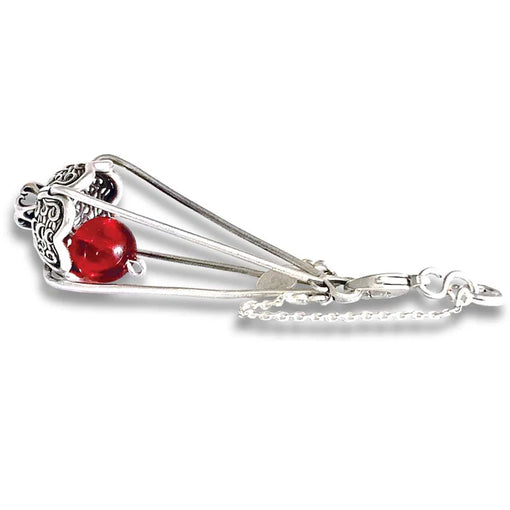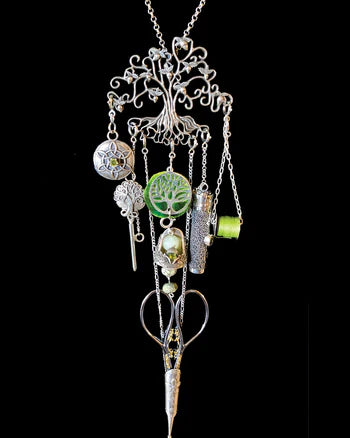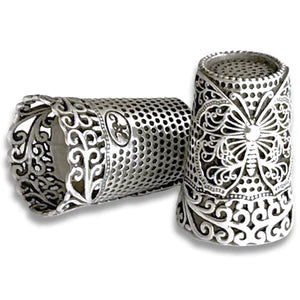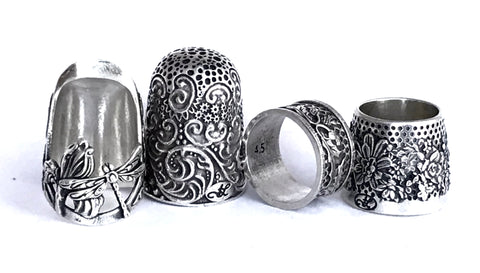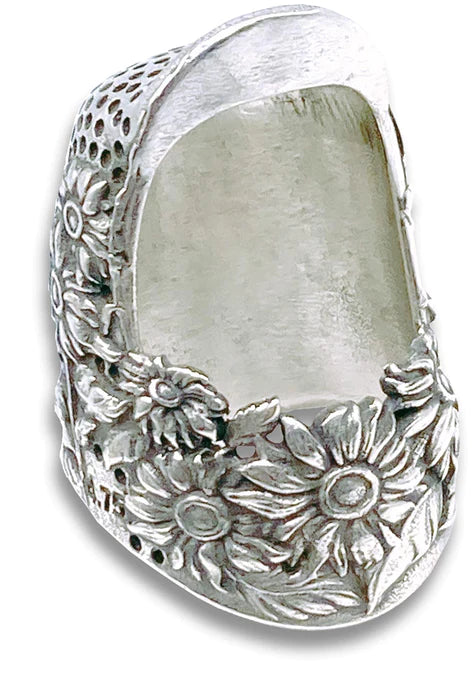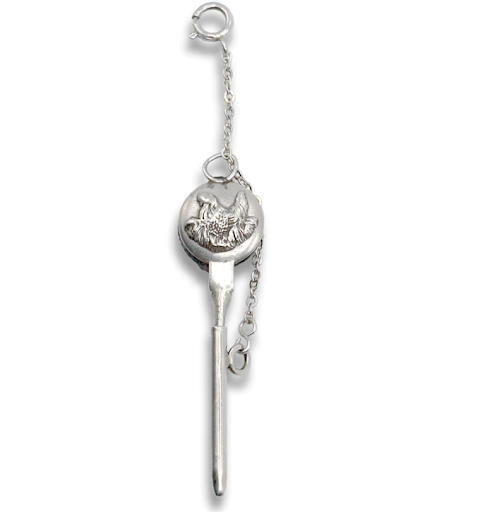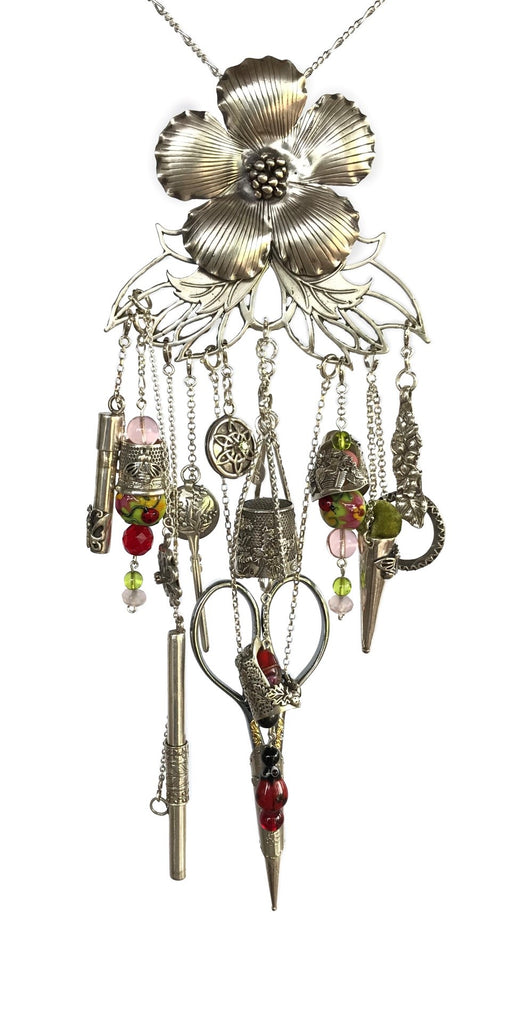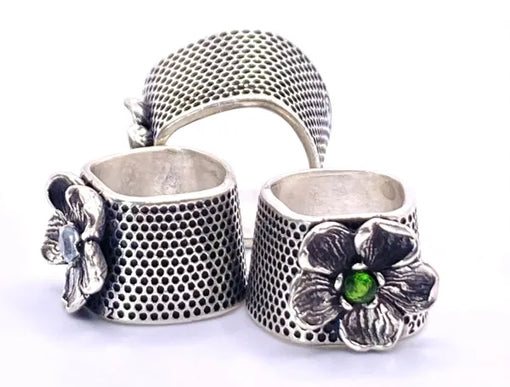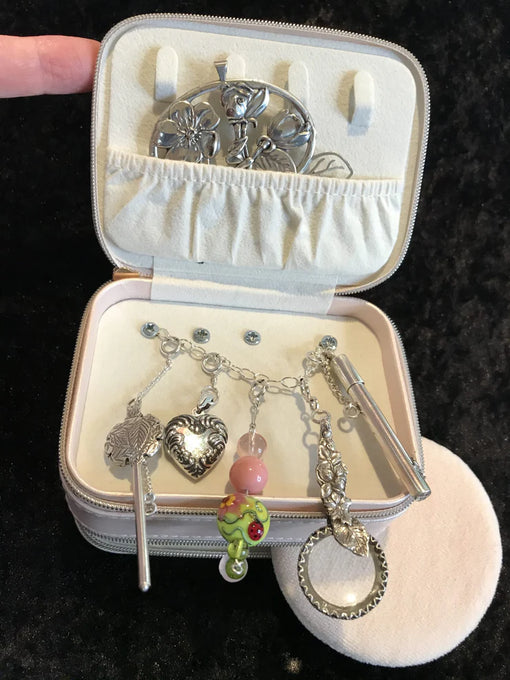
- Article published at:
- Article author: David Larson
- Article tag: Chatelaine
In the tapestry of history, few items blend functionality with elegance as seamlessly as the chatelaine. Envision a bygone era where the silhouette of a woman was not only defined by her attire but also by the gentle jingle of her chatelaine – a cluster of essential tools dangling gracefully from her waist. This accessory, which might seem quaint to modern eyes, was a powerhouse of utility and a badge of skill and readiness in its time. The chatelaine tells a story of societal norms, women's roles, and the ingenious ways in which practicality was woven into the fabric of daily life.
From Functional to Fashionable: The Evolution of Chatelaines
Tracing the chatelaine's lineage reveals its metamorphosis from a mere utility belt to a statement piece that captured the artistry and fashion sensibilities of its era. Initially, chatelaines were simple, designed to keep essential items like keys, scissors, and sewing tools within arm's reach. However, as they grew in popularity, they became more elaborate, crafted from silver, gold, and other precious materials, adorned with jewels, and meticulously engraved or embossed with intricate patterns. This evolution mirrors the changing societal attitudes towards women's roles and the ever-blurring lines between practicality and aesthetic appeal.
The Chatelaine's Role in the Sewing Community
In the realm of sewing and needlecraft, the chatelaine was an indispensable ally. It was the Swiss Army knife of its day, ensuring that every necessary tool was but a reach away. For the seamstress, tailor, or home crafter, the chatelaine was a symbol of proficiency and preparedness. It held thimbles, needles, threads, and small scissors in a compact, accessible manner, enabling work to proceed smoothly and efficiently. The chatelaine represented a personal workstation that moved with the wearer, a testament to the ingenuity of its design and the craftiness of its users.
Chatelaines Today: A Nostalgic Revival
The digital age, with its virtual toolkits and automated solutions, might seem worlds away from the tactile intimacy of the chatelaine. Yet, there's a growing fascination with this historical artifact. Modern crafters, vintage fashion enthusiasts, and collectors are driving a resurgence of interest in chatelaines, seeking them out for their beauty, historical value, and practical applications. Contemporary chatelaines, while echoing the past, are being adapted for today's use – holding USB drives, lip balms, and even mini hand sanitizers, alongside traditional crafting tools.
Collecting Chatelaines: Tips and Treasures
The pursuit of collecting chatelaines is more than a hobby; it's a journey into history. Each chatelaine is a window into the past, reflecting the craftsmanship, aesthetics, and everyday life of its time. Collectors revel in the hunt for these pieces, from flea markets and estate sales to auctions and online collectors' forums. Starting or enhancing a collection requires a keen eye for authenticity, an appreciation for craftsmanship, and a love for the stories that these pieces tell. Whether you're drawn to the simple, utilitarian chatelaines of the early days or the ornate, jeweled pieces of the Victorian era, each acquisition adds a unique chapter to your collection.
Integrating Chatelaines into Modern Crafting
Adapting the chatelaine to contemporary crafting practices isn't just a nod to tradition; it's a practical solution for keeping essential tools at hand. Whether you're into knitting, jewelry making, or paper crafting, a customized chatelaine can streamline your process. It fosters a connection to crafters of the past, whose hands once worked the tools that dangled from their chatelaines. This blend of history and utility is appealing, offering a sense of continuity and shared experience across generations of makers.
The Chatelaine: More Than Just a Sewing Accessory
At its core, the chatelaine is a testament to the ingenuity of its creators and users. It exemplifies the human desire to blend functionality with beauty, to keep the tools of our trades and the symbols of our roles close at hand. The chatelaine's enduring appeal lies in its ability to adapt, to find relevance in new contexts, and to continue serving as a bridge between past and present. It reminds us that even the most utilitarian objects in our lives carry stories, artistry, and a potential for reinvention.
Today, as we rediscover and reimagine the chatelaine, we celebrate not just a sewing accessory but a piece of cultural heritage. It's a reminder of the creativity and resourcefulness that define human craftsmanship. For those inspired to explore the world of chatelaines, to collect them, or to integrate them into their crafting practices, the journey is as rewarding as the destination. The chatelaine, in all its forms, invites us to delve into history, to appreciate the beauty in functionality, and to carry forward the legacy of makers who have left their mark on the fabric of time.
Thimbles For You honors this legacy by providing tools, inspiration, and a community for those who cherish the craft of sewing and the history that accompanies it. We invite you to explore our collection and to discover the perfect tools to complement your crafting journey. Whether you're seeking a chatelaine to add to your collection or tools to fill one, visit us at Thimbles For You, where the past and present merge in the service of creativity and craftsmanship.
Learn More

